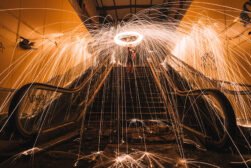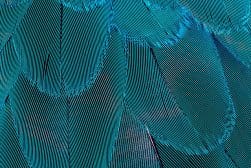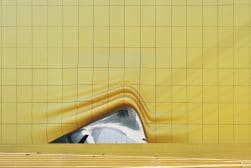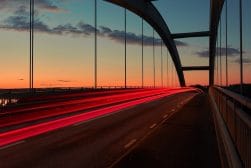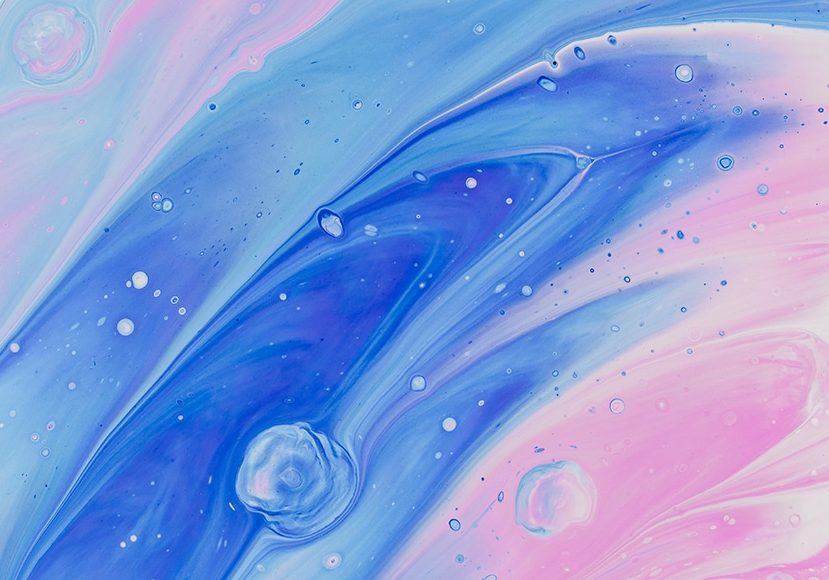
Guide to Abstract Photography
Have some fun by creating immersive abstract photography with your camera today! This guide includes 16 top tips with examples for beginners.
Learn | Photography Guides | By Ana Mireles
Do you want to communicate something with your images but don’t know how to represent it? Or perhaps, you find regular photography to be much too literal to really express the way you see the world?
Then, abstract photography might be for you. This type of photography is great fun and gives you total freedom in your creations because you don’t need to have the ‘real’ thing in front of the camera.
Actually, you don’t even need a camera! You can use your smartphone, or turn your photographs abstract using post-processing techniques, or you can even do some camera-less images.
These and more ideas are explained in this guide for you to find the way of creative thinking that’s right for you.
If you’re ready to experiment with abstract images, let’s get started!
What is Abstract Photography?
We are used to thinking about photography as something that shows us things as they are – even if it holds some subjectivity due to the photographer’s style and perspective.
Instead, abstract photography is a style that doesn’t immediately associate with its referent from the world. It presents us with an image of something that we don’t necessarily know what it is.
In abstract photos, you can see a shape, a set of lines, or patterns that make you feel, reflect or evoke an old memory.
This gives the photographer a lot of freedom to represent ideas that would otherwise be very difficult to put into their work.
What is considered Abstract Art?
Abstract art does not aim to literally represent the subject that it’s referencing. It can be sculpture, painting, video or photography that uses a shape, a color or a texture to represent a subject.
What is Abstract Expressionism in photography?
Abstract expressionism is an art movement that started in the US in the 1940s. On top of being non-figurative, it’s very emotional and based on existentialism. Painters and photographers influenced each other during this period.
What are the Key Elements of Abstract Photography?
Do you want to know some elements to consider when you’re doing abstract photography? Here’s a shortlist that can help.
- Composition
Composition refers to the way you arrange the elements inside the frame. It’s important in any photograph, but even more in abstract photography since the viewer doesn’t have any referential clues to understand where to direct the attention.
- Emotion
Since there isn’t a reference to a physical object, abstract photography aims to generate an emotion. It’s not about what you see but about what you feel when you see it.
- Lighting
Light is the raw material of photography. By manipulating the quality of the light and the color temperature, you can create a specific mood. Also, using the contrast between brightness and shadows, you can direct the gaze of the viewer.
- Subtraction
Isolating elements is key for abstract photography because you remove them from their context. It also helps to keep things simple, which forces the observer to focus on the textures, lines or types of patterns in the image.
- Subtlety
Since abstract photography doesn’t need to be associated with things from the real world, you should only provide a hint of an object or a sense of something. Whatever you choose to represent, it needs to be subtle.
- Balance
To keep your abstract photos from becoming a cluttered mess, you need to find the right balance in the elements. You can do this with composition and lighting.
13 Abstract Photography Tips
If you’ve ever wondered how to create an abstract image, here are some tips to help you start thinking outside the box and develop a concept for your abstract art.
How Much Do You REALLY Know About Photography?! 🤔
Test your photography knowledge with this quick quiz!
See how much you really know about photography...

1. Make a close-up
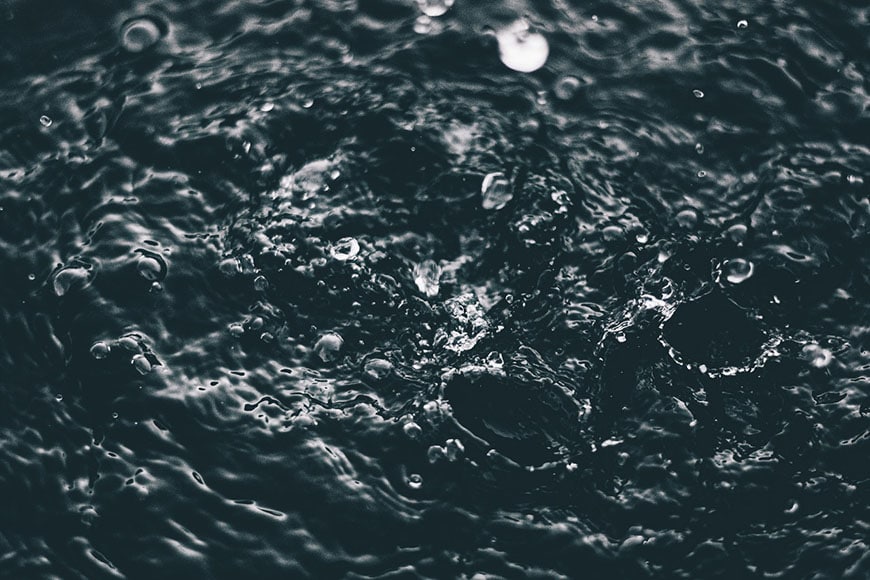
Credit: Oleg Magni
One way to abstract a subject is by removing the context around it. To do this, you can take a close-up photo of your subject.
A macro lens is perfect for this type of photography as it allows you to focus on very small subjects.
You can also use a telephoto with macro lens capabilities or a wide-angle lens that allows you to get very close.
2. Blur your subject
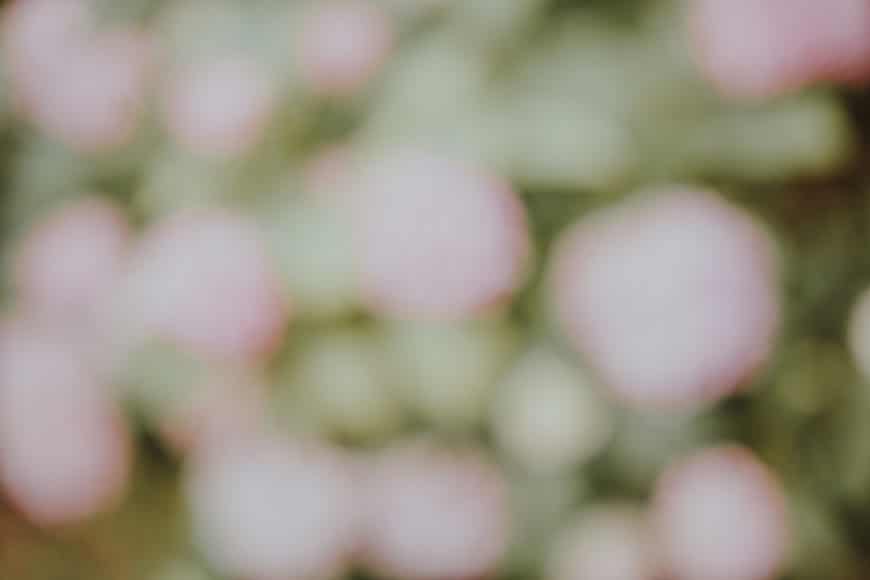
Credit: Annie Spratt
Any of you that needs glasses will easily understand this idea. When you wake up or get out of the shower – or any other time you’re not wearing them – you only see blotches of color. When you put your glasses on, then you understand what things actually are.
We can borrow this concept for abstract photography. To turn your subject into an abstract one, you can remove all details that provide information about what it is.
A perfect example is a ‘bokeh’. You can easily create a bokeh background, but it can also be the main subject for abstract photography.
To achieve this, you need to set your camera to manual focus mode, and simply de-focus to you reach the desired level of blurriness.
3. Use light and shadow
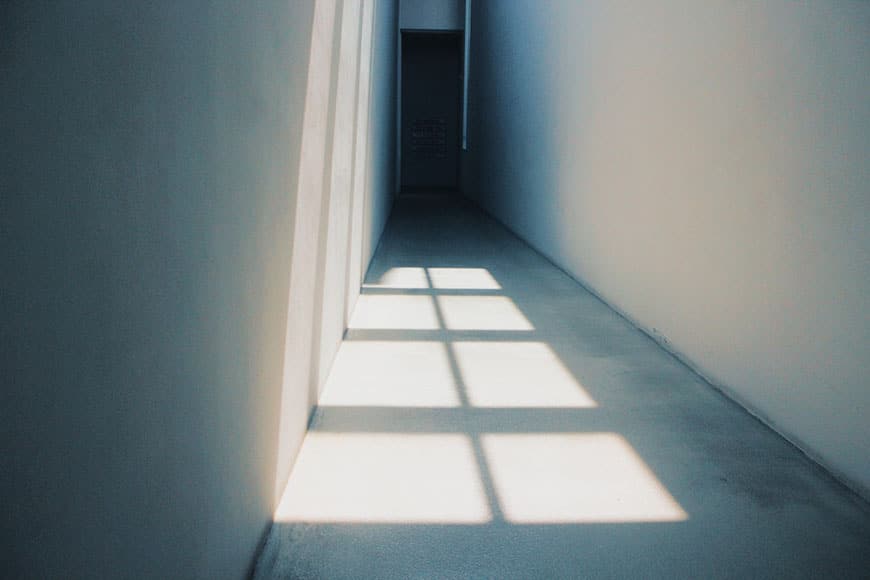
Credit: Pawel L
When you photograph the light and shadows created by an object instead of the object itself, you can create a mood, a feeling, or a suggestive subject for your abstract photos.
Experimenting with light and shadow, you can create contrast in such a way that directs the eye towards a focal point.
Keep in mind the visual weight to create a balanced composition.
4. Look for texture
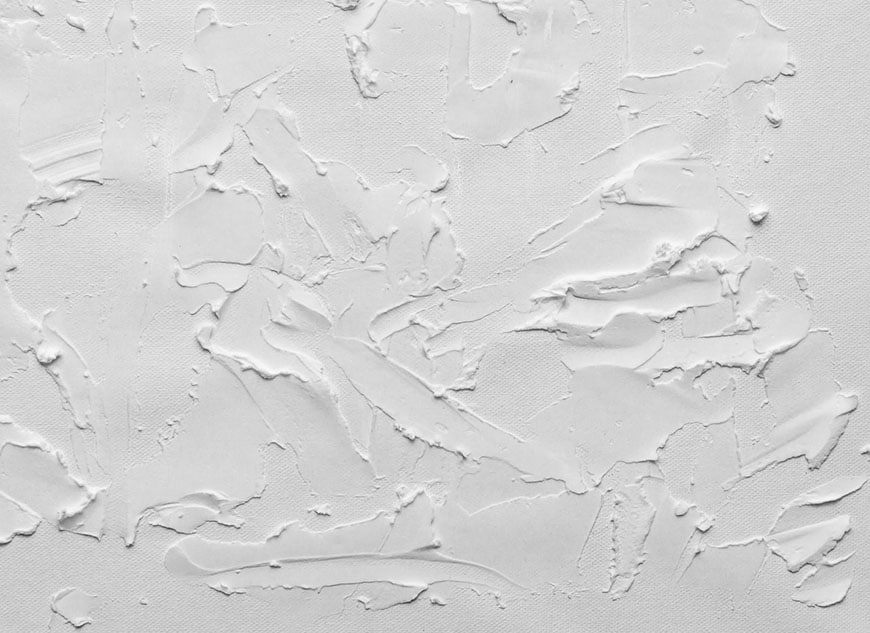
Credit: Steve Johnson
A texture is what gives the viewers a sense of touch when they are looking at a photo.
When a texture is isolated, it connects the eye to the hands and the skin – you forget about looking for a reference of what the thing is and start wondering how it feels.
Textures are also an interesting subject for photographers because you can manipulate them with light. By changing the position and quality of the light, you can completely change the texture.
This gives you multiple ways to explore the same subject with your abstract photos.
5. Look for patterns
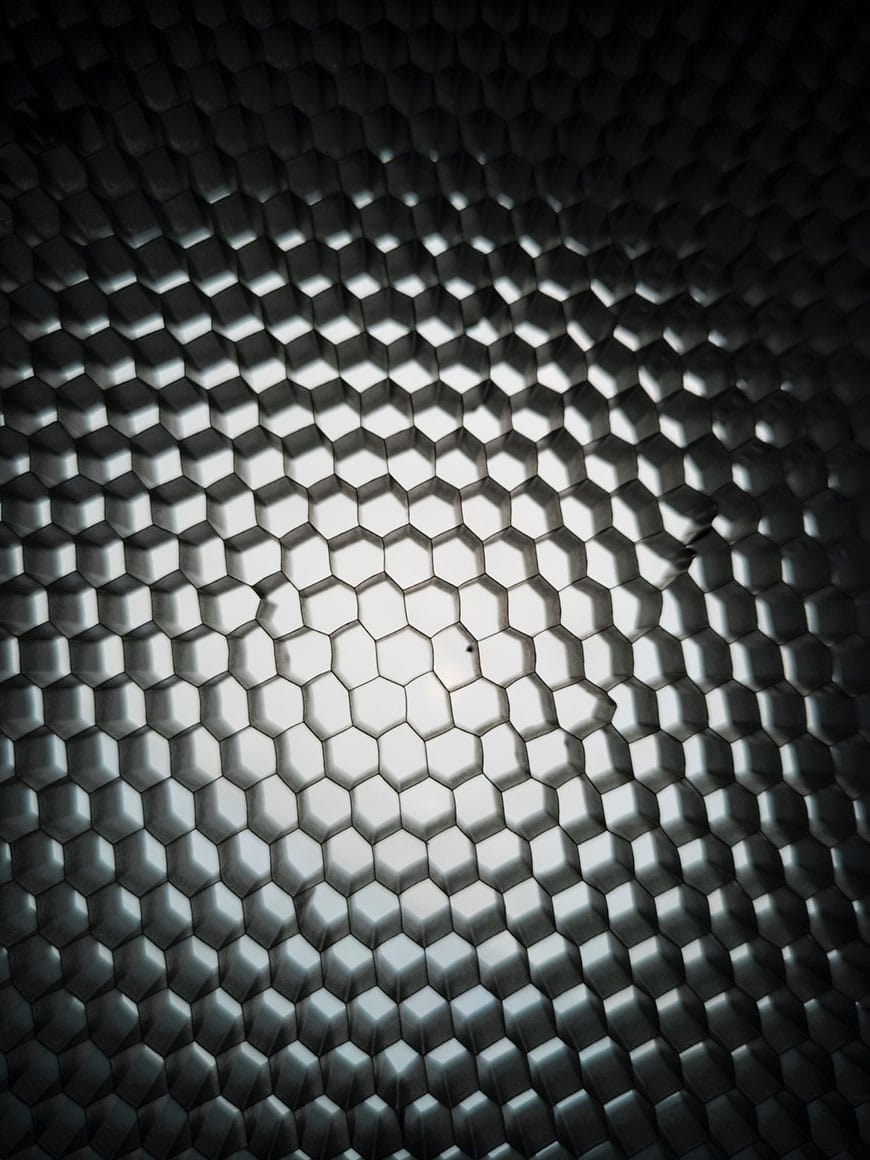
Credit: Engin Akyurt
A pattern is the repetition of a design. When you isolate this from a building, a product or any other object, it becomes an abstract subject matter.
Patterns direct the viewer’s attention to the shape, lines, form and color instead of a figurative object.
If you start to pay attention, you’ll see that patterns surround us constantly. They can be human-made, such as those in architecture – or they can be found in nature, for example, in the veins of a leaf.
See also why repetition is good in photography.
6. Use motion blur
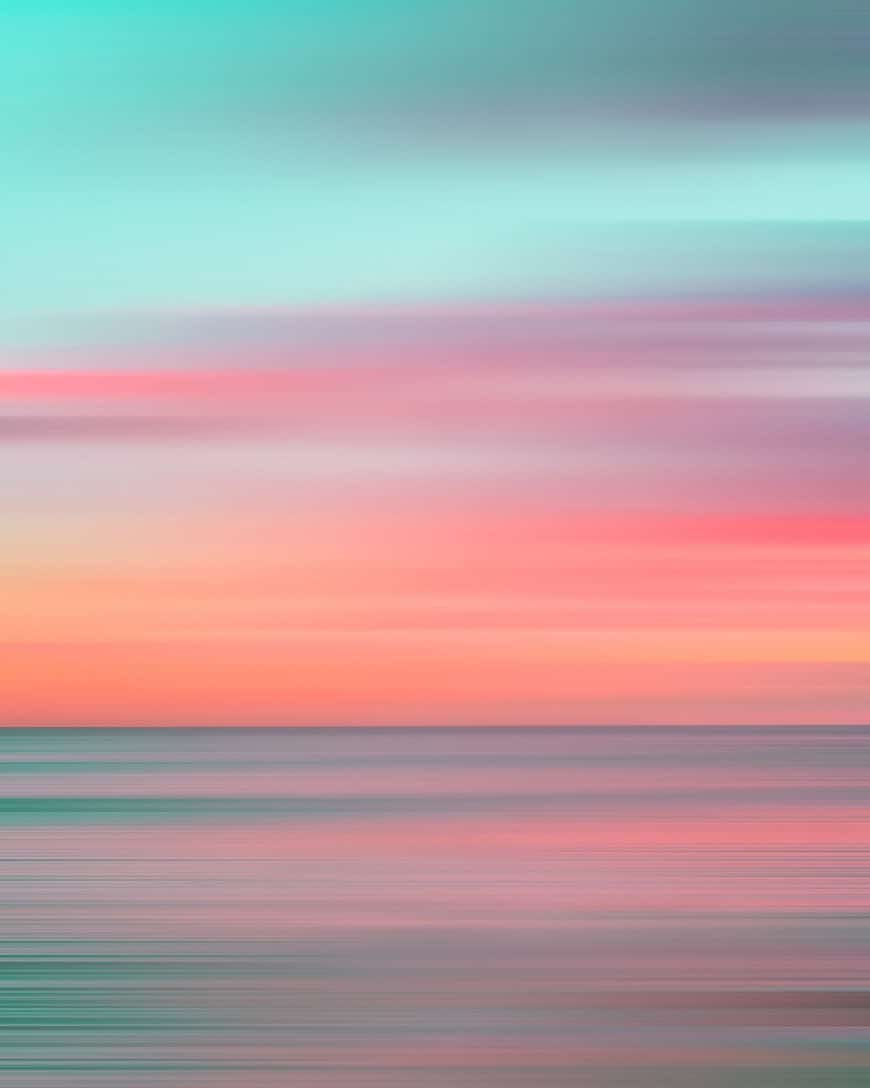
Credit: Jess Vide
You can create motion blur by photographing a moving subject, with intentional camera movement, or combining both techniques.
Either way, you need to use a slow shutter speed. If you know how to use your camera in manual mode, this would be a great start. Otherwise, you can shoot in shutter priority mode.
You can then adjust how fast or slow you want the shutter to open and close – the camera will take care of compensating the other settings for correct exposure.
There isn’t a specific shutter speed that you need to learn in order to create motion blur – it will depend on how fast you or your subject are moving and the amount of blur that you want.
You can experiment with different speeds and movements. For example, if you want to create perfect stripes like the ones in the example picture, you need to use a tripod – then pan with the tripod head.
If you want a more random pattern, you can shoot handled and try making circular motions or just moving around without a specific direction.
Keep in mind that having the shutter open for long periods of time means that a lot of light is coming into the sensor. If you’re shooting when it’s bright, you can use neutral density filters.
7. Experiment with color
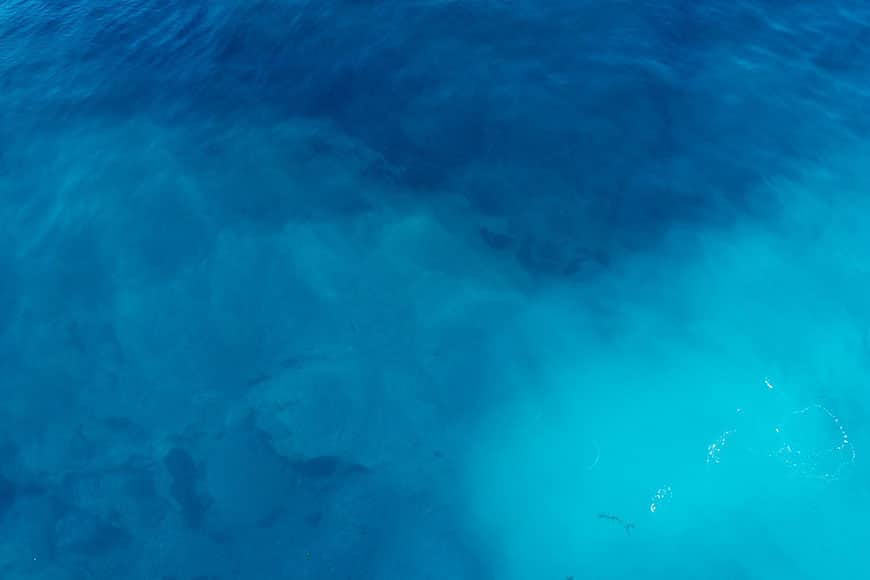
Credit: Jaymantri
We’ve already established that abstract photos are about emotion. Well, artists have used color to awake emotions on the observer for centuries.
Wassily Kandinsky – pioneer of abstract painting – said that “color is a power which directly influences the soul”.
Psychology of color is used for art, marketing and even chromotherapy.
There are many studies, books and treaties that research the connection between colors and emotions. Photographers can use this knowledge to create abstract images with a powerful impact on the viewer.
8. Use reflections
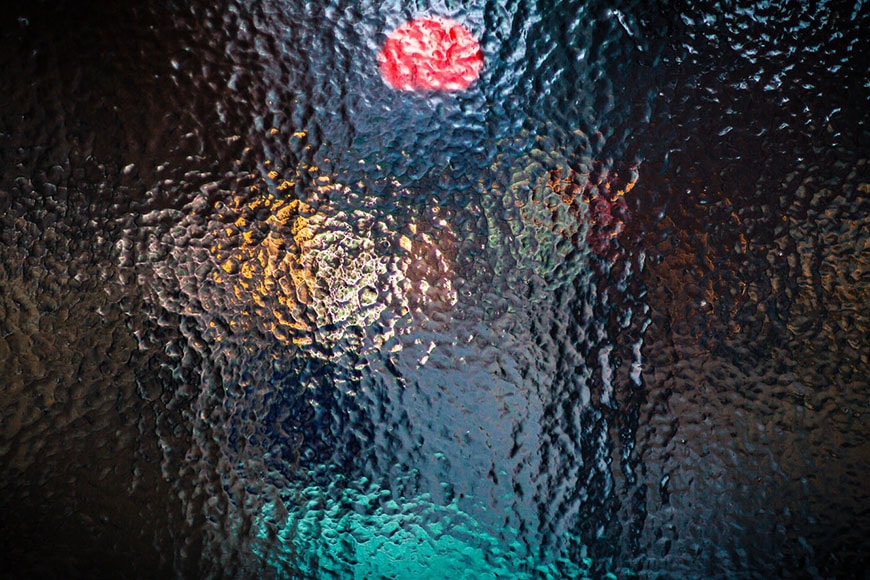
Credit: Burst
Reflections are a great way to turn a subject into something abstract. If the reflective surface is not smooth, it will automatically distort reality.
Reflections are also very easy to find. Any body of water creates reflections, and movement makes it abstract.
For example, look at a puddle’s reflection while it’s still raining and see how the falling drops distort the reflected image. The same goes for wind and so on.
Another way to create abstract reflections is by using textured surfaces, like the one in the example. Otherwise, you can defocus the reflection or create motion blur, as discussed in other tips from this article.
9. Try light painting
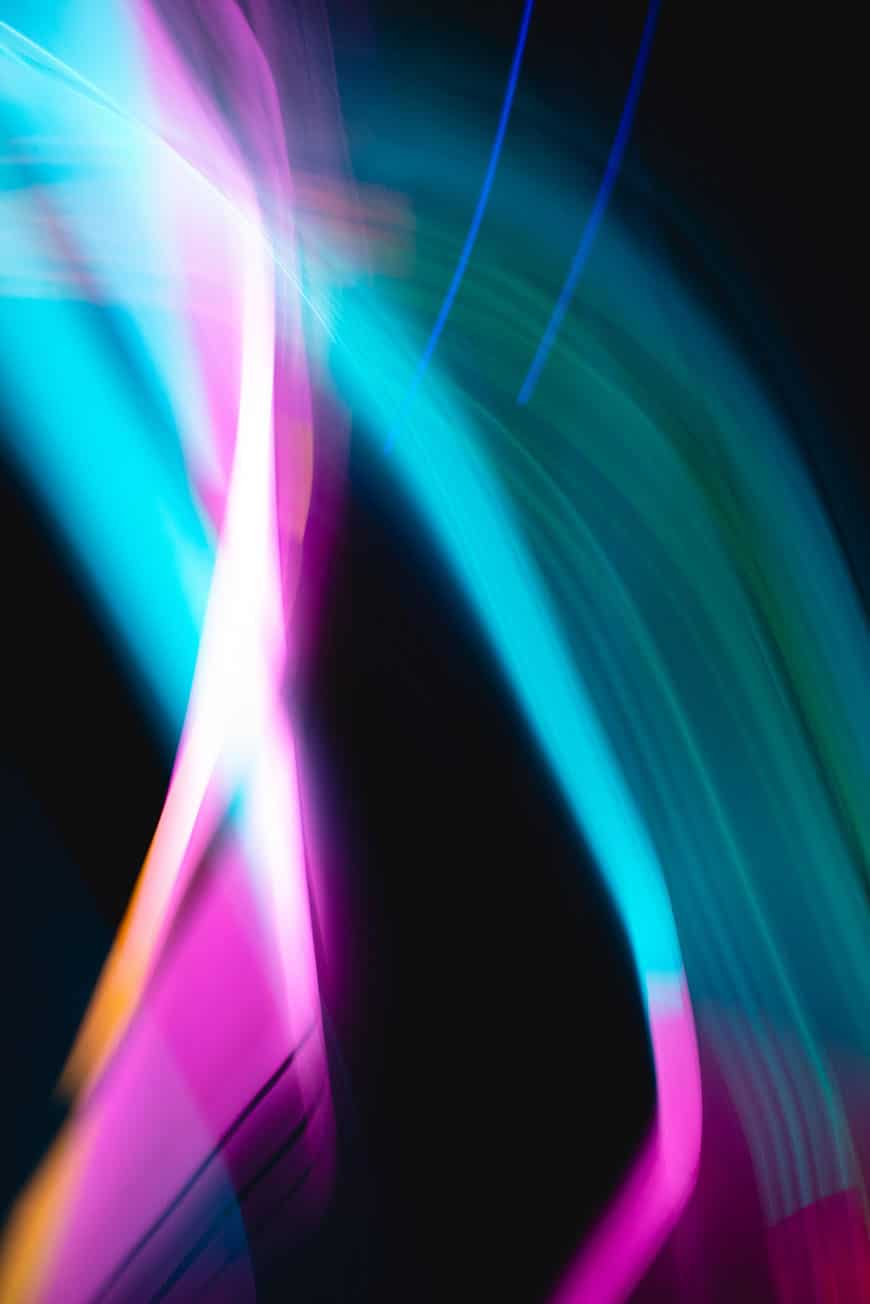
Credit: Bruno Thethe
This technique is wonderful for making abstract photographs as it turns light and colors into the subject matter.
You don’t need any objects in your picture – you can use light to create shapes and patterns as if you were using a brush with paint.
How is light painting done? First, you’ll need to be in a completely dark space. Then, put your camera on a tripod to have it steady while you do your ‘painting’.
Put the camera in Bulb mode – this means that the shutter will stay open until you close it. It’s better if you use a remote trigger or a cable shutter release.
Then, while the shutter is open, you can create any pattern or design with light. For this, you can use a torch or a LED lightstick.
10. Change perspective

Credit: Joshua Sortino
Sometimes when you see something from a different angle, it takes you a moment before you realize what it is.
That’s something that you can do in your abstract photography to render something in another way.
By showing the viewers a perspective that they don’t know, they lose the reference with the real object.
Like the photographer said about his example photo above: “Sometimes you just have to look up”.
To help you find an unusual perspective, here’s an exercise I like to do. I choose a subject matter, and then I take twenty photos of it.
The first ones come pretty easy – from above, from the side, from far away, etc. After that, you’ll be really pushing yourself to think outside the box.
11. Create your own subjects
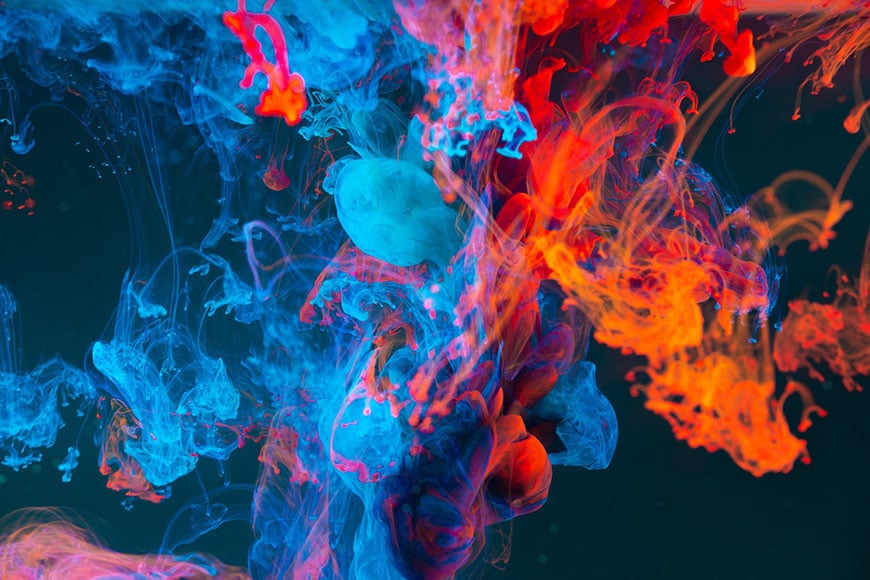
Credit: Lucas Benjamin
There are many ways to create your own abstract subjects. For example, you can mix liquids with different densities to create different layers of color.
Also, you can create bubbles by combining oil and water, which are substances that don’t mix. Soap bubbles are another colorful subject for your abstract photography.
Dropping food coloring into water or milk creates fascinating images. Creating abstract subjects is a matter of experimentation and creativity.
If you lack ideas, you can always look for some DIY science experiments online, or check out our article on fun DIY photo hacks.
12. Try drone photography
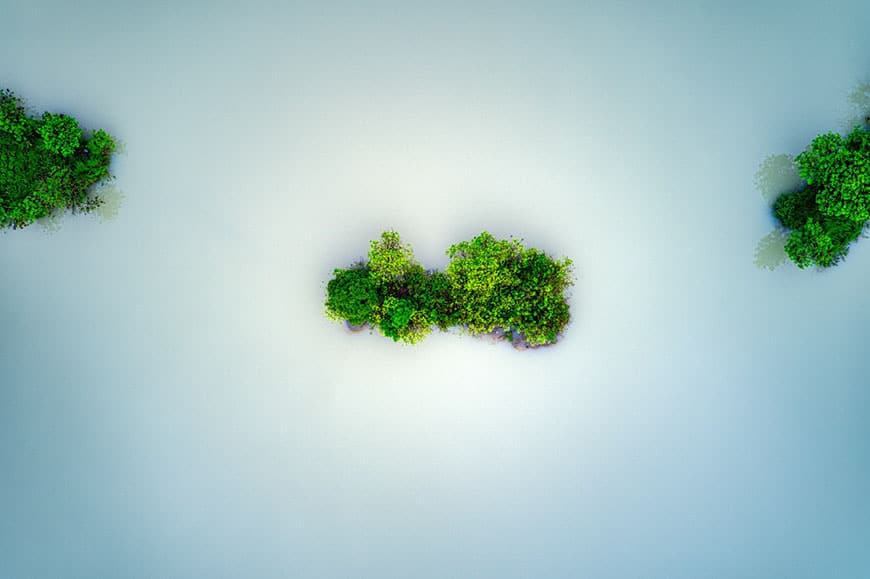
Credit: Tom Fisk
Since the 1940s aerial photography was part of the abstract expressionist movement, William A. Garnett was one of the first photographers that created surreal images by photographing roads and fields from above.
Garnett attached a camera to his aircraft’s wings to make the images that awarded him a Guggenheim fellowship.
Nowadays, it’s much easier to photograph the earth from above, thanks to affordable drones. Yet, we’re still not used to seeing our environment this way, so you can still create some amazing abstract photography from the sky.
Using a drone is not permitted everywhere. Make sure you have the necessary permits before using one, then check out our guide to drone photography to learn how to do it well.
13. Use DIY filters
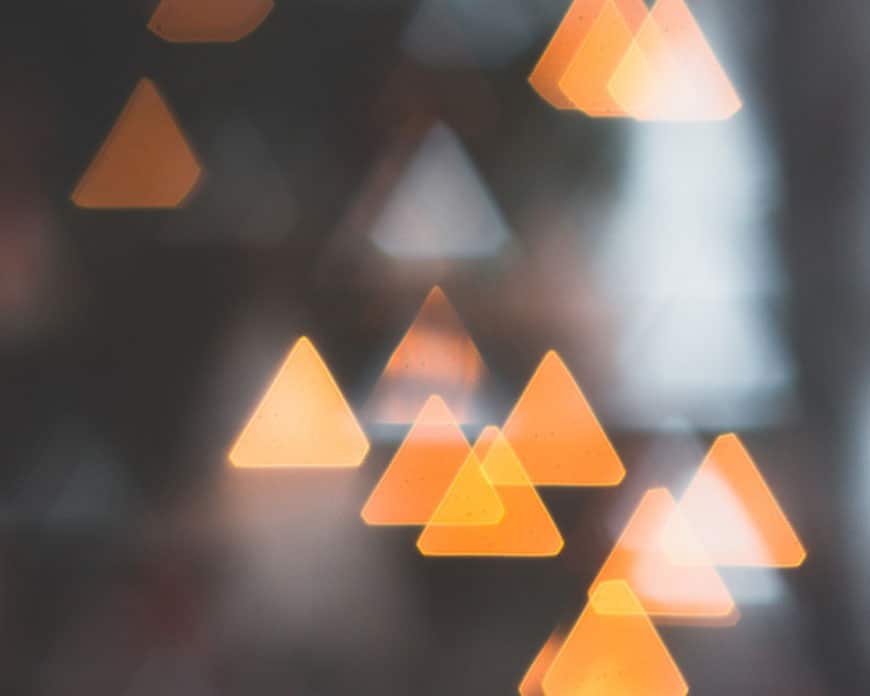
Credit: Thijs van der Weide
Some filters can help you alter the ‘reality’ that’s in front of the camera—for example, a multi-vision filter or a fog filter. If you have the budget for them, that’s great. If not, you can always DIY!
For example, smudge a cheap UV filter with vaseline to create a blur on the entire scene or just in a specific area. You can also change the amount of vaseline to make it more or less dense, creating different effects.
Vaseline is just an example; you can use different substances or materials to experiment with your scene.
You can also create a bokeh filter by cutting out shapes on black thick paper and placing it in front of the lens. As a result, you’ll be changing the shape of the blurred lights in your scene.
14. Do some cameraless photography

Credit: Maureen McQuillan CC
In the history of abstract photography, some artists explored the possibility of doing it without a camera.
Some of the most famous camera-less photography artists are Man Ray, László Moholy Nagy and Christian Schad. These works are called photograms.
These artists arranged the scene on top of photosensitive paper and then exposed it. This would leave an imprint from the objects on the paper.
15. Create abstract photography in post-processing

Credit: John Petalcurin
There are many ways to create an abstract photograph in post-processing. I like to use Adobe Photoshop, but you can use the software of your choice.
For example, you can duplicate your image and mirror it. Then, mirror both of them in the other direction. You can further multiply this action and make small rotations until you create a kaleidoscope effect creating an abstract photo.
You can also apply different types of blur to achieve an un-focus effect or a motion blur to mimic the techniques mentioned in this article’s previous tips.
Alternatively, you can over or underexpose your photos to eliminate details.
Finally, you can enlarge a small part of the image to isolate it from its context and enhance the abstract effect with the loss of resolution.
16. Grab inspiration from the masters
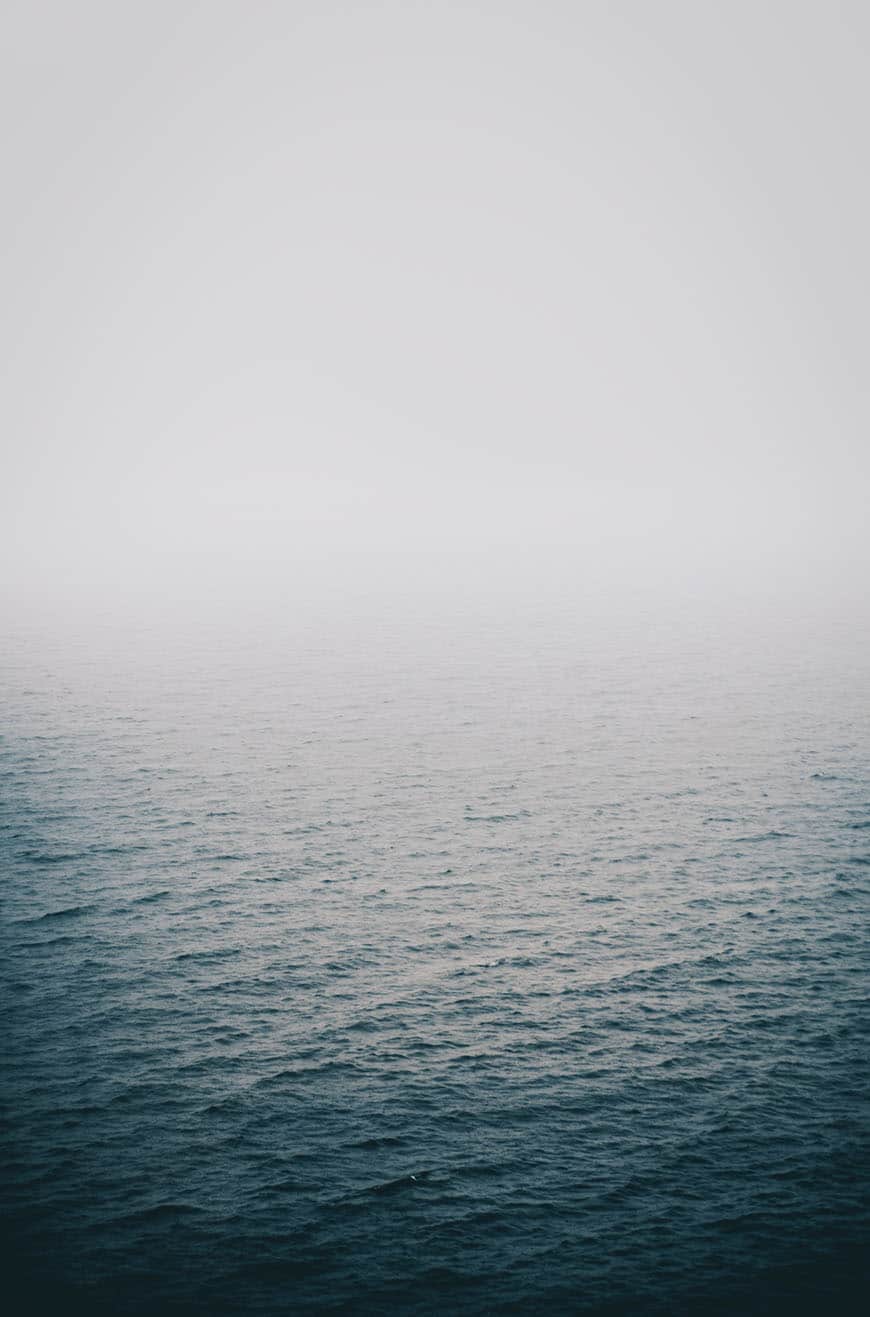
Credit: Todd Trappani
As I was mentioning at the beginning of the article, abstract photography has a long history. It connects with abstract painting, which can be traced back to the impressionist period.
Some historians even connect it with cave paintings. Either way, there have been some great masters that you can study and draw inspiration from their work.
In the photographic field, Andrew S. Grey uses motion to create his images. Ola Kolehmainen turns architecture into abstract photographs, or Frances Seward does it with landscapes.
Final Words
I hope this article helped you to see the potential in abstract photography. It’s a fun and creative way to express yourself and create amazing images.
If you have any more tips and ideas, share them in the comments section.

Check out these 8 essential tools to help you succeed as a professional photographer.
Includes limited-time discounts.





